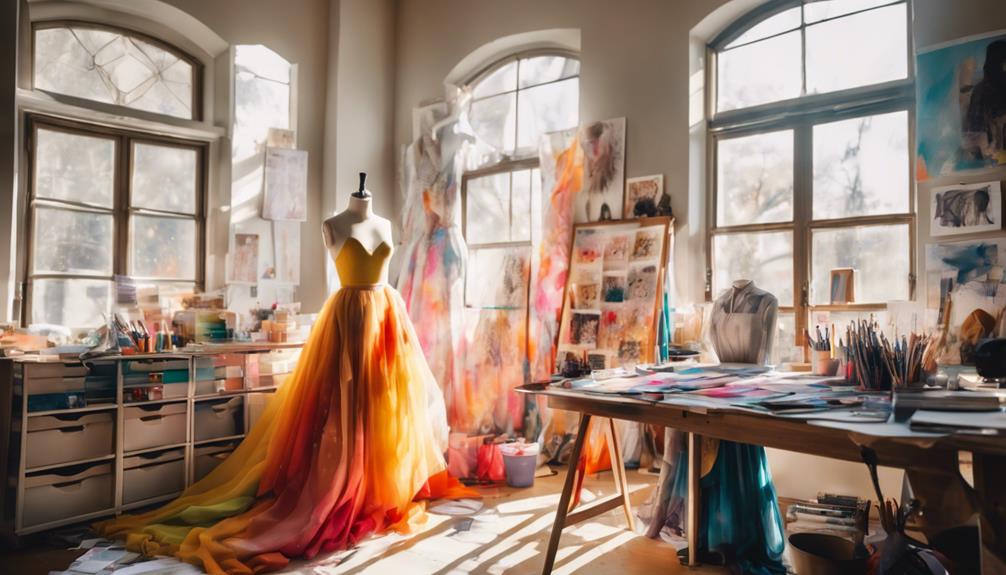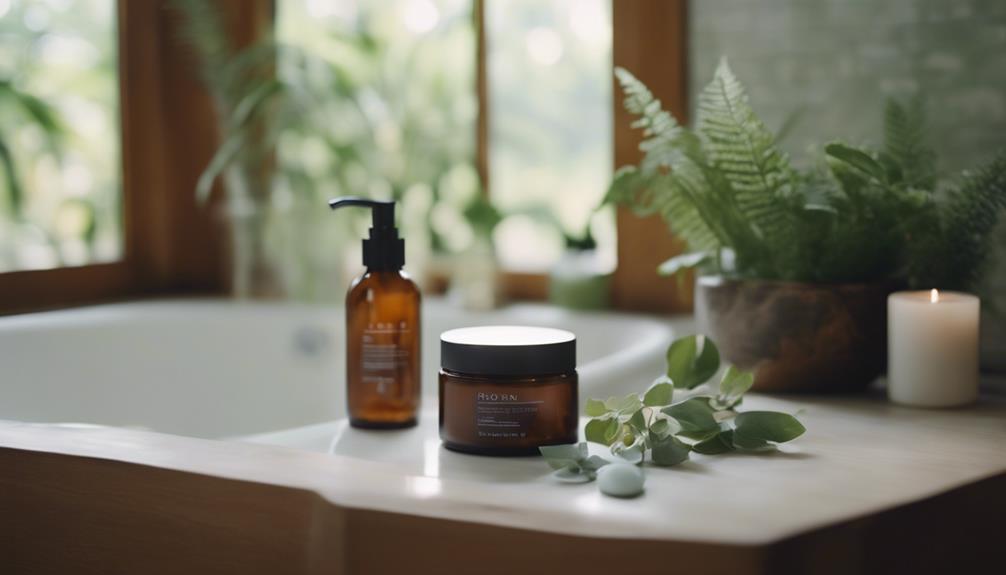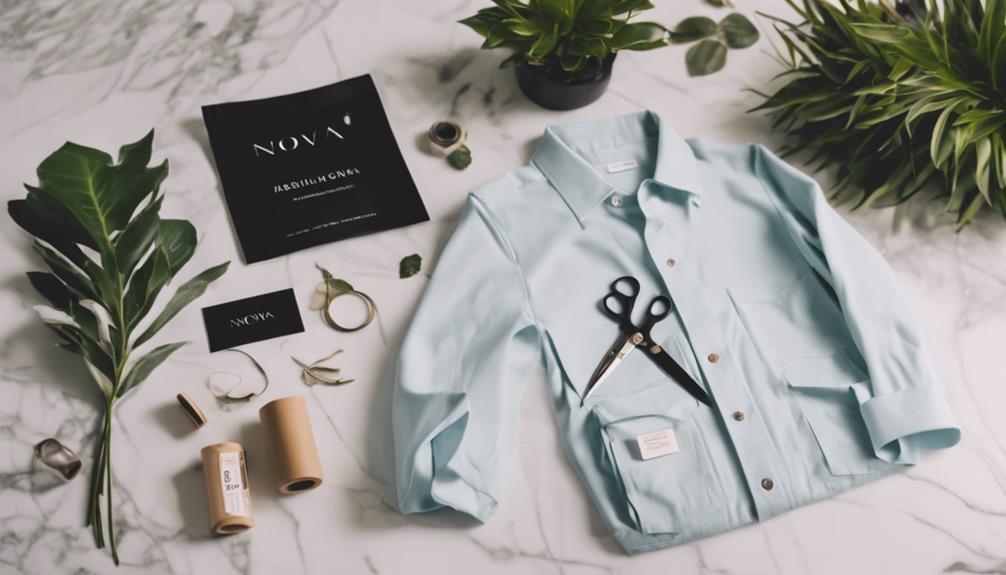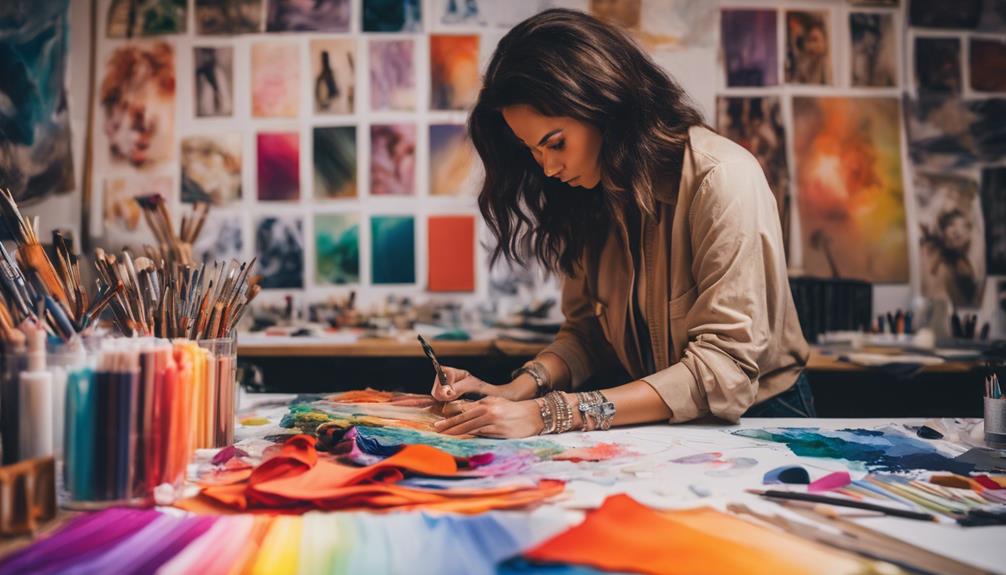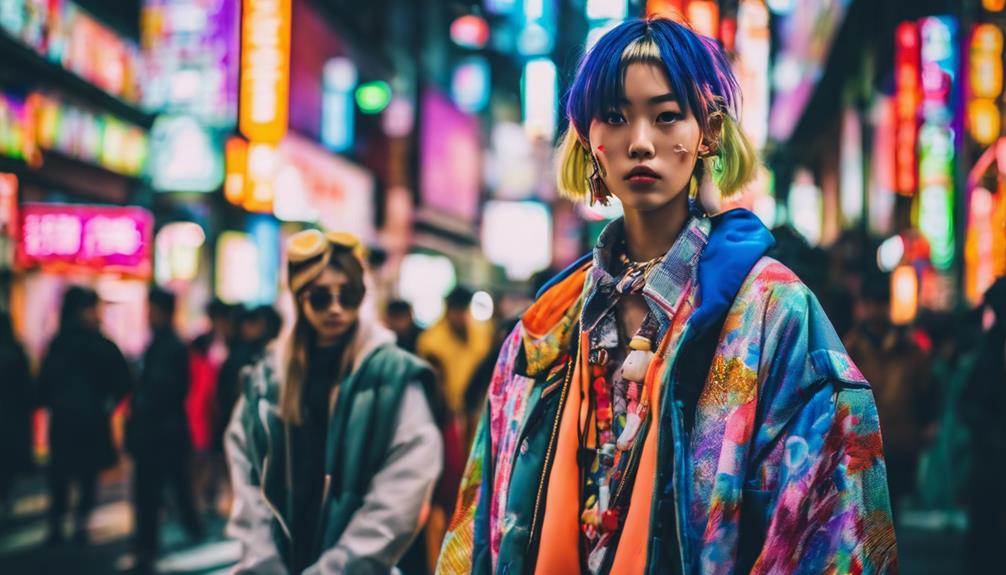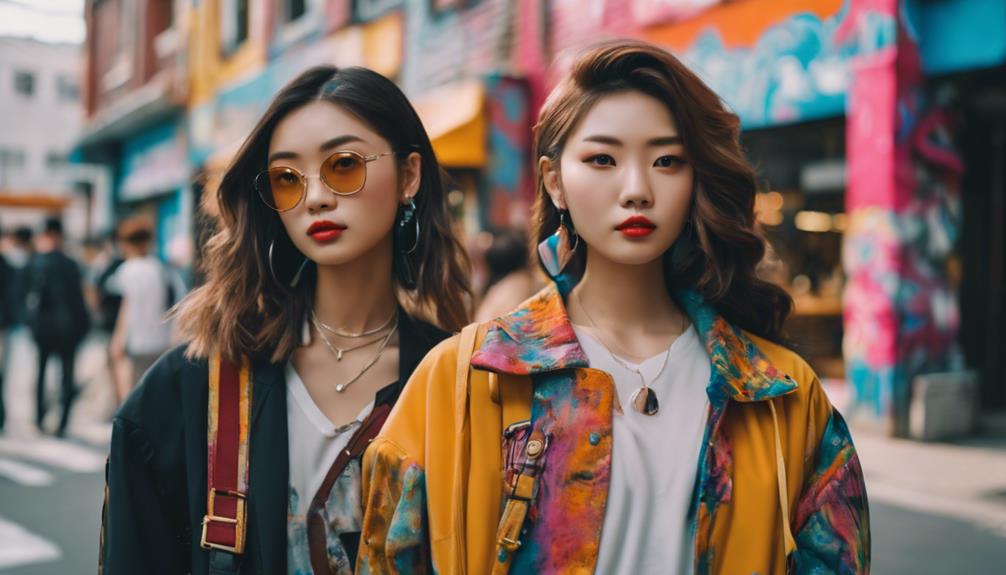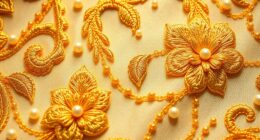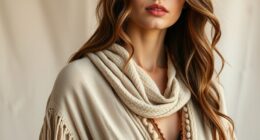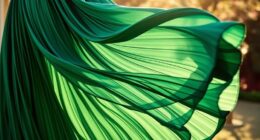Fashion illustration combines creativity and technical skills, allowing you to showcase your design ideas vividly. You will learn the essential characteristics, such as signature silhouettes, fabric textures, and color plays that bring your designs to life. Modern trends also focus on sustainable practices, making this art form even more relevant today. With various styling techniques and tools at your disposal, you will be well on your way to mastering the craft. By exploring this exciting field, you can express your unique vision while keeping current with fashion’s dynamic landscape. Keep going to uncover tips and insights that will elevate your illustration journey!
Key Takeaways
- Understand the historical evolution of fashion illustration, from the 18th century to modern social media influences.
- Explore key characteristics like signature silhouettes, fabric textures, and timeless garments that define effective fashion illustrations.
- Learn sustainable fashion practices and innovations shaping today's industry, emphasizing eco-friendly materials and ethical labor.
- Utilize styling techniques such as layering, mixing prints, and textures to create dynamic fashion illustrations and outfits.
Origin and historical background of the fashion trend/style
Fashion illustration has transformed markedly since its roots in the late 19th century, reflecting the changing dynamics of style and culture.
As you explore the contributions of fashion icons and movements, you'll see how these illustrations not only captured trends but also influenced them.
This journey from traditional techniques to modern digital tools showcases the enduring impact of fashion illustration in the industry.
Fashion's Transformative Journey
Originating in the 18th century, fashion illustration began as a tool for designers to convey their ideas before evolving into a celebrated art form that reflects the dynamic nature of style. Initially, fashion illustrators created detailed sketches that helped communicate concepts and designs to clients and manufacturers. As the art form matured, it transformed into standalone pieces, showcasing the creativity and vision of the illustrators themselves.
In the early 20th century, artists like Paul Poiret and Erté revolutionized fashion illustration by using bold colors and dynamic compositions, capturing the changing styles of the era. The rise of magazines in the 1920s and 1930s further elevated the status of fashion illustrators, making their work essential for advertising and promoting the latest trends.
While the introduction of photography in the mid-20th century led to a decline in traditional illustration, many fashion illustrators adapted, blending their skills with photographic imagery. Today, fashion illustration is experiencing a resurgence, energizing the art form through social media platforms. This evolution allows illustrators to share their work with global audiences, merging traditional techniques with digital innovations, and ensuring that fashion illustration remains a crucial part of the creative landscape.
Fashion Icons and Movements
Exploring the influence of key fashion icons and movements reveals how styles have evolved, shaped by cultural shifts and societal changes throughout history.
Fashion designers like Coco Chanel and Christian Dior laid the groundwork for modern fashion in the early to mid-20th century. Chanel introduced simplicity and comfort, while Dior's 'New Look' emphasized femininity and elegance.
The 1920s brought the flapper style, where shorter hemlines and boyish silhouettes mirrored women's newfound social freedoms.
Fast forward to the 1960s, when the mod movement emerged. Designers like Mary Quant shook up the scene with bold patterns, vibrant colors, and the iconic mini skirt, representing youth culture and rebellion.
The late 1970s saw the punk movement, led by Vivienne Westwood, which challenged norms with DIY aesthetics and provocative styles. This was a stark contrast to the grunge movement of the 1990s, pioneered by Marc Jacobs, who embraced a casual, anti-fashion ethos with oversized silhouettes and thrift store finds.
Each of these influential fashion icons and movements not only defined their eras but also left a lasting impact on the fashion landscape we see today.
Key Characteristics
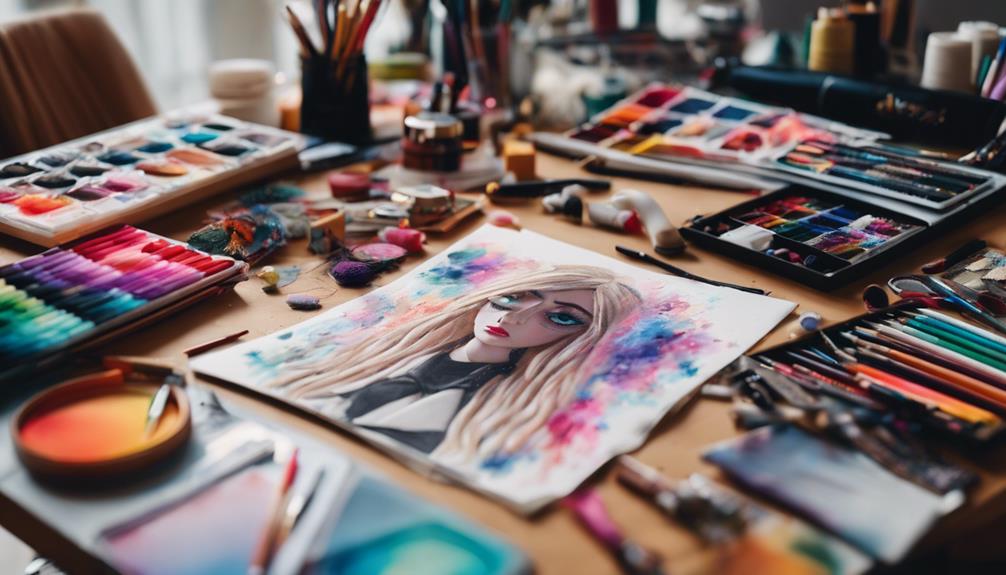
When you look at fashion illustrations, you'll notice signature silhouettes and lines that define each piece.
The way fabric textures and hues are captured adds depth and character, making the designs come alive.
Plus, timeless statement garments often stand out, showcasing the illustrator's unique perspective and creativity.
Signature Silhouettes and Lines
Signature silhouettes and lines in fashion illustration highlight the unique shapes and drapes of garments, allowing you to appreciate the overall design while emphasizing key characteristics like waistlines and hemlines.
These signature silhouettes can take many forms, from the flattering A-line to the sleek pencil shape or the voluminous ball gown, each altering the perception of the design.
Lines are essential in creating a sense of movement; curved lines evoke softness and femininity, while straight lines signify structure and sophistication.
This interplay of lines helps define the garment's essence, guiding your eye and enhancing the illustration's visual impact.
Exaggerated proportions, such as elongated limbs or oversized accessories, are commonly used to develop a distinctive artistic style, drawing attention to specific design elements.
Additionally, artists strategically use negative space around these silhouettes to enhance composition, ensuring the figure wearing the clothing remains the focal point of the illustration.
Fabric Textures and Hues
Fabric textures and hues greatly influence the mood and appeal of your fashion illustrations, shaping how viewers perceive your designs. As a fashion illustrator, you'll want to explore the wide range of fabric textures, from the smooth, luxurious feel of silk to the rugged durability of denim. Each texture sets a different tone; the sheen of satin can evoke elegance, while the matte finish of cotton conveys simplicity.
Understanding color is just as essential. Hues can stir emotions—warm tones like red and orange create energy, while cool tones like blue and green bring a sense of calm. The interplay between light and shadow on textured fabrics adds depth, allowing you to illustrate how light interacts with surfaces, like the gleaming quality of leather versus the absorbent nature of wool.
Don't forget to incorporate patterns such as stripes or florals alongside textures to enhance visual interest. This combination makes your illustrations more dynamic and engaging, capturing the essence of your designs.
Timeless Statement Garments
Timeless statement garments stand out for their versatility, effortlessly shifting between occasions and seasons while maintaining a stylish edge. In fashion, these pieces are essential because they can be dressed up or down, making them perfect for any event, from casual gatherings to formal occasions.
Key characteristics include high-quality materials and craftsmanship, ensuring durability and a luxurious feel that lasts. Classic silhouettes, like the tailored blazer or the little black dress, are staples in your wardrobe due to their enduring appeal and ability to flatter various body types.
These garments typically feature neutral or muted color palettes, which make them easy to pair with other items. This adaptability suits a wide range of personal styles, allowing you to express yourself while keeping your look cohesive.
Additionally, timeless statement pieces often incorporate unique design elements, such as bold patterns, distinctive textures, or unexpected details. These features elevate their visual interest without compromising their timelessness.
Modern Interpretation
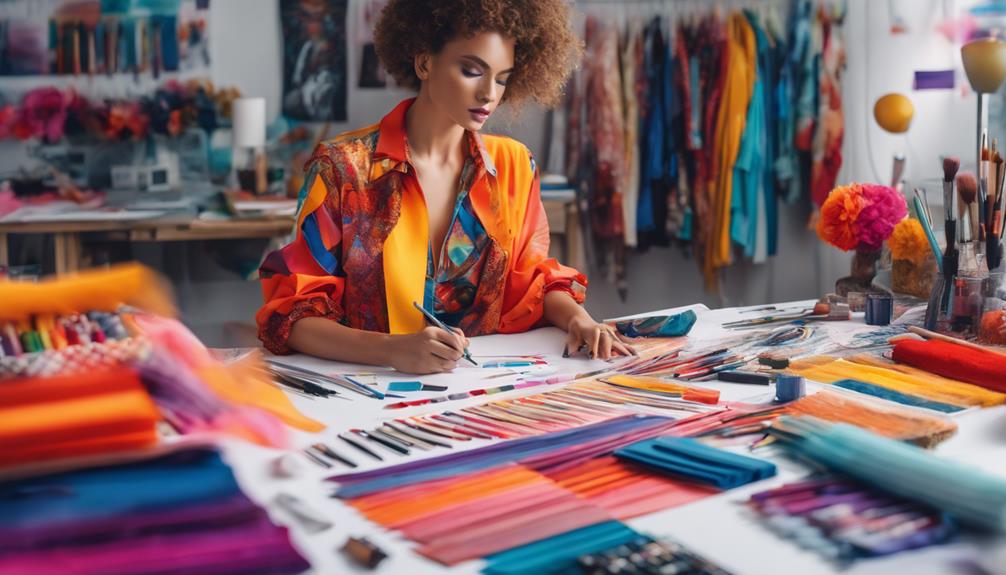
In the domain of modern fashion illustration, you'll notice a growing emphasis on sustainable fashion innovations and emerging labels that prioritize eco-friendly practices.
As public figures champion these changes, illustrators capture their influence, weaving narratives that highlight both style and sustainability.
This shift not only reflects current trends but also invites you to engage with a more conscious approach to fashion.
Sustainable Fashion Innovations
Sustainable fashion innovations are transforming the industry by embracing eco-friendly materials and cutting-edge technologies to create stylish, responsible choices for consumers.
You'll find that using organic cotton and recycled polyester markedly reduces environmental impact compared to conventional fabrics. With the rise of digital textiles and 3D printing, brands can now produce items on-demand, minimizing waste and excess inventory while allowing for customization.
Circular fashion practices are gaining traction, encouraging you to return used garments for recycling or repurposing. This not only extends the lifecycle of your clothing but also helps reduce landfill waste.
Innovative dyeing techniques, like waterless dyeing and plant-based dyes, are being implemented to decrease water consumption and harmful chemical usage in the textile industry.
Moreover, biofabrication is emerging as a promising alternative to traditional animal-derived materials, with options like mycelium and lab-grown textiles leading the way.
These developments contribute to ethical and sustainable fashion practices that resonate with your values. By embracing these innovations, you're part of a movement that champions sustainability while still enjoying fashionable choices.
Emerging Sustainable Fashion Labels
Emerging sustainable fashion labels are redefining industry standards by prioritizing eco-friendly practices and ethical labor, making it easier for you to make responsible choices in your wardrobe.
These brands focus on using materials like organic cotton, recycled fabrics, and biodegradable textiles, ensuring that even little choices you make can have a big impact on the environment.
It's not just about the materials; these labels also emphasize ethical labor practices, guaranteeing fair wages and safe working conditions for garment workers. This commitment to social responsibility is essential in reshaping the fashion landscape.
The rise of digital fashion shows and online platforms has made it possible for these sustainable labels to reach you directly, without the high carbon footprint associated with traditional events.
Plus, consumer demand for transparency means you can access detailed information about their supply chains and production processes.
Collaborations between emerging sustainable brands and established designers are becoming more common, further elevating awareness and acceptance of eco-friendly practices.
Fashion-Forward Public Figures
Fashion-forward public figures inspire countless fashion illustrators with their bold styles and innovative choices, pushing the boundaries of traditional fashion norms. Icons like Billie Eilish and Harry Styles challenge gender conventions, encouraging you to explore diverse representations in your illustrations. Their fearless choices open up new avenues in the fashion industry, allowing you to break free from conventional designs.
Social media platforms, such as Instagram and TikTok, play a pivotal role in shaping the aesthetics of these public figures. You'll find a constant stream of fresh trends and styles that can invigorate your work. Collaborating with celebrities can also lead to exclusive collections, showcasing the direct influence these figures have on the fashion design process.
Moreover, many fashion-forward public figures emphasize sustainable and ethical choices, urging you to reflect these values in your illustrations. By highlighting eco-friendly brands and innovative designs, you contribute to a larger conversation about responsible fashion in the industry.
Keep an eye on these trendsetters, and let their unique styles fuel your creativity, helping you craft illustrations that resonate with modern audiences while pushing the envelope of fashion design.
Styling Tips
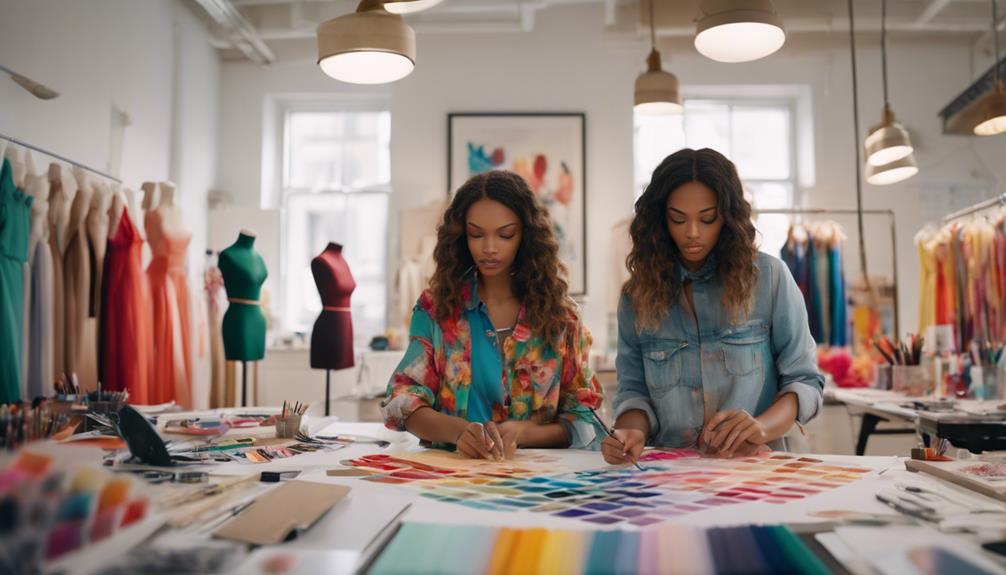
When it comes to styling your fashion illustrations, start with the classic white button-up shirt; it's a versatile staple that can be dressed up or down.
Layering is key, so think about how to create looks for every season by mixing and matching different pieces.
Classic White Button-Up Shirt
A classic white button-up shirt serves as a versatile foundation for countless outfits, easily shifting from office chic to weekend casual. In the art of fashion illustration, mastering the styling of this staple can elevate your wardrobe considerably.
For a polished office look, pair the shirt with tailored trousers; the crisp lines will project professionalism. On weekends, swap those slacks for distressed jeans to achieve a relaxed vibe.
Don't be afraid to experiment with different fits. An oversized shirt can create a trendy silhouette, while a fitted option emphasizes your shape. You can further enhance your look by accessorizing with statement jewelry or a colorful scarf, adding a personal touch to your ensemble.
Tucking the shirt into high-waisted bottoms accentuates your waistline, creating an elegant appearance, while leaving it untucked offers a more laid-back style.
Whether you're aiming for sophistication or comfort, the classic white button-up shirt is adaptable enough to meet your fashion needs. So, embrace this essential piece, and let it inspire your creativity in the art of fashion illustration!
Layered Looks for Every Season
Layering adds depth to your outfits, allowing you to adapt your style to any season while keeping comfort and versatility in mind. Start with lightweight base layers like fitted turtlenecks or tank tops; they provide a cozy foundation for your layered looks, ensuring you stay comfortable even in chilly weather.
To create visual interest, mix textures and lengths; for instance, pair a chunky knit sweater over a flowing dress. This combination not only enhances your ensemble but also adds dimension.
Don't forget about accessories! Scarves, vests, and cardigans can be easily added or removed, making them perfect for shifting between indoor and outdoor environments.
When it comes to colors, experiment with seasonal palettes. Earthy tones work beautifully in fall, while bright pastels are perfect for spring. By incorporating these elements, you can create stylish layered looks that reflect your personal taste while being seasonally appropriate.
Pairing Prints and Textures
Mixing prints and textures can elevate your layered looks, adding a fresh dimension to your style. When you're pairing prints, aim for a balance between bold and subtle patterns. For example, combining a large floral print with smaller polka dots creates visual harmony without overwhelming the eye.
Always consider the color palette; ensuring your prints share complementary or analogous colors maintains a cohesive look that reflects a designer's vision.
Keep scale in mind as well. Using one large-scale print as a focal point and complementing it with smaller patterns helps avoid clashing. This technique allows your outfit to feel intentional and well thought out.
Textures also play a vital role in enhancing your ensemble. Pairing a smooth fabric like silk with a textured material like boucle can create interesting contrasts that add depth.
Additionally, layering different textures, such as mixing knitwear with denim or leather, showcases the versatility of each fabric and keeps your outfit dynamic.
Shopping Guide
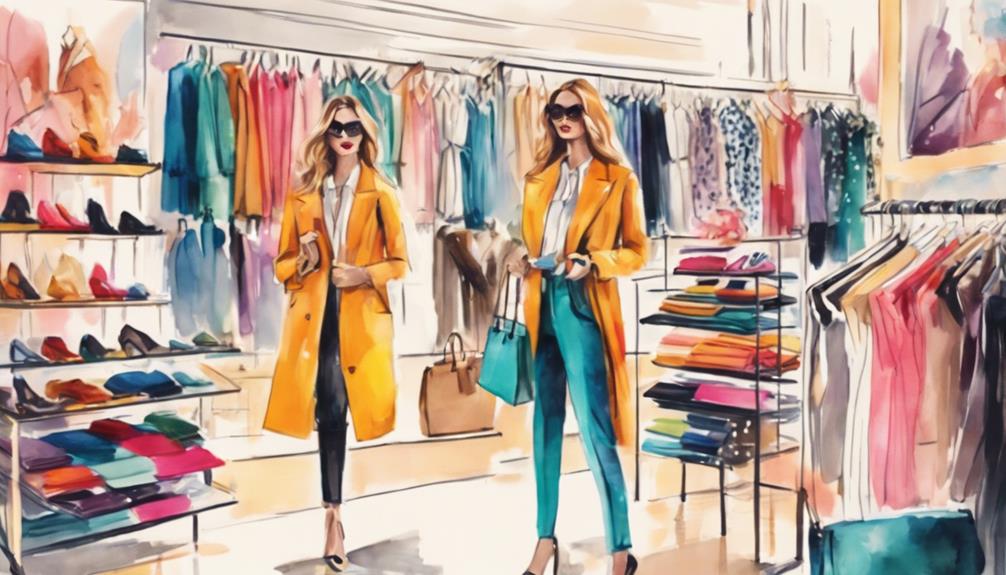
When you're shopping for fashion illustration materials, prioritize quality tools that will elevate your artwork and enhance your creative process.
Start by looking for marker pads like the 'Bought on Riley' brand, which features double-sided pages. This design not only reduces waste but also improves usability, making it easier to focus on your art.
Next, invest in high-quality markers such as Copic markers. They're known for their consistency, refillability, and vibrant color range, perfect for making your illustrations pop.
Don't forget to include versatile tools like Tombow pens on your list; their brush and fine tips are ideal for both detailed sketches and quick ideas.
A skin tone marker, like Copic E51 (Milky White), is essential for creating realistic figures in your illustrations.
Finally, always test your markers before use to avoid any unwanted color transfer. This simple step guarantees your chosen supplies meet your artistic needs effectively.
Upcycling Fashion Pieces
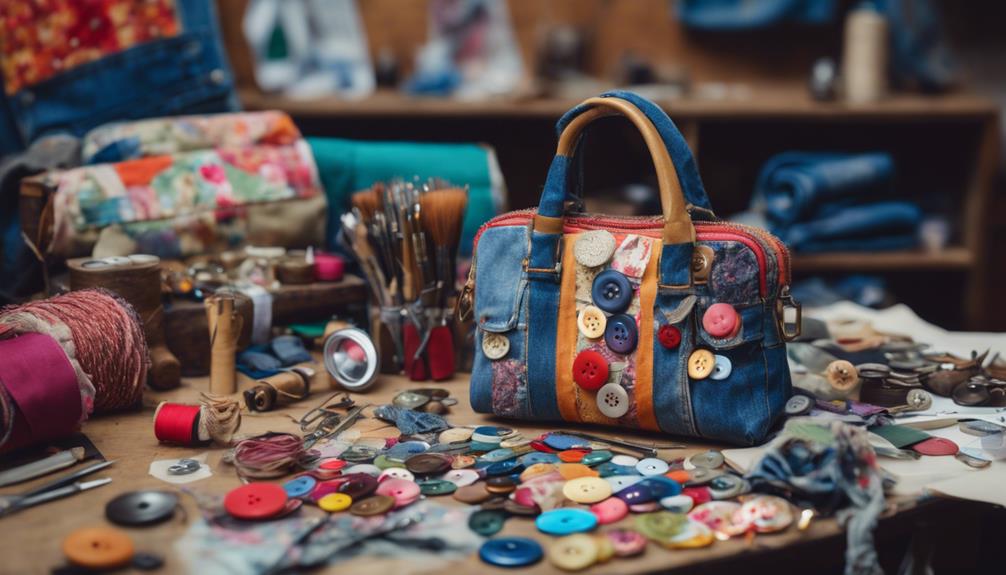
Upcycling fashion pieces lets you repurpose old clothing into something fresh and stylish.
You can creatively alter vintage garments to reflect your personal taste, turning them into unique statements.
This approach not only cuts down on waste but also showcases your innovative flair in fashion design.
Repurposing Old Clothing
Transforming old clothing into stylish, new pieces not only reduces textile waste but also allows you to express your creativity and personal style. Upcycling fashion is all about taking those forgotten garments and giving them a little bit of love. You can cut and sew different pieces together or add embellishments like patches and embroidery to create something unique. If you want to refresh the color and style, consider dyeing the fabric for a fresh look.
The beauty of repurposing clothing is that it can save you money while enabling you to curate a personalized wardrobe. Instead of spending on new items, you can turn what you already own into something fabulous. To make the most of your upcycling projects, keep a sketchbook handy for jotting down ideas and experimenting with various techniques. This way, you can plan and design your creations effectively.
With the global upcycling market projected to reach $400 billion by 2025, it's clear that this trend is here to stay. So why not jump in and start transforming your old clothes into standout fashion pieces? Your creativity is the limit!
Alter Vintage Garments Creatively
Altering vintage garments creatively breathes new life into forgotten pieces, allowing you to showcase your personal style while promoting sustainable fashion practices. Upcycling vintage clothing involves using different techniques like patchwork, dyeing, and embellishments to enhance their appeal. You can resize garments to fit modern body shapes or transform long dresses into stylish skirts or tops, adding contemporary elements like zippers or unique buttons.
Engaging with local thrift stores or vintage shops offers a diverse selection of garments perfect for upcycling. This not only reduces textile waste but also encourages individuality in fashion. You can personalize your vintage finds through screen printing or embroidery, aligning them with current trends and your unique taste.
Experimentation is key when it comes to upcycling. Don't be afraid to mix fabrics and styles, creating one-of-a-kind pieces that reflect your artistic vision. As you alter these garments, you'll discover the joy in making something new from the old.
Cultural Impact
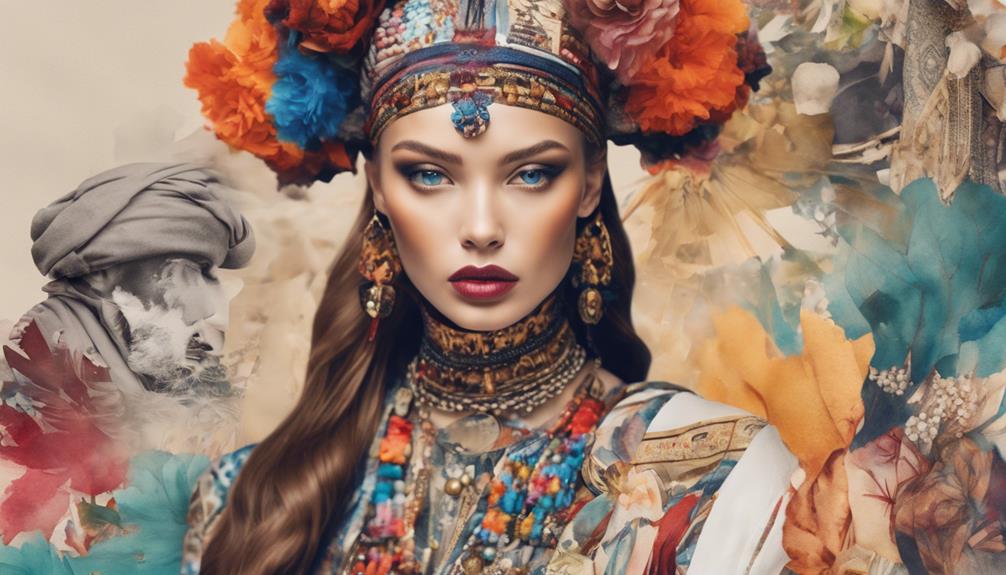
Fashion illustration isn't just about pretty pictures; it's a powerful tool in music videos that shapes cultural narratives.
You'll find that the intersection of fashion and activism in these visuals challenges societal norms and inspires change.
Fashion in Music Videos
Music videos play a pivotal role in shaping fashion trends, often making a lasting impact on both pop culture and consumer behavior. From the iconic styles of Madonna and Michael Jackson in the '80s and '90s to today's collaborations, fashion in music videos has evolved into a powerful cultural force.
Take Beyoncé's partnership with Balmain in her 'Apeshit' video, for instance; it showcased high fashion in a contemporary context, blending artistry with style.
As you explore this intersection of music and fashion, you'll notice how artists like Billie Eilish and Lil Nas X use streetwear and vintage aesthetics to challenge traditional norms. Their bold choices reflect broader social movements and resonate with audiences, pushing boundaries in both music and fashion.
With the rise of social media, music video fashion transforms instantly into viral trends. Viewers can quickly access and replicate these looks, reinforcing the connection between what they see in videos and their shopping habits.
Fashion in music videos isn't just about style; it's a significant marketing tool, shaping what consumers desire and influencing the industry, much like digital art has revolutionized visual expression.
Fashion and Activism Intersection
As artists harness the power of fashion illustration, they effectively communicate essential social and political messages that resonate with audiences and inspire change.
You'll notice how the fashion and activism intersection is becoming increasingly prominent, with illustrators using their talent to depict cultural movements like body positivity, gender equality, and environmental sustainability. This not only promotes inclusivity but also challenges the status quo within the fashion industry.
High-profile campaigns from brands such as Gucci and Stella McCartney often incorporate fashion illustration to advocate for ethical practices and raise awareness about social justice issues. These visuals engage you emotionally, making complex topics more relatable and inspiring action.
Moreover, illustrators focusing on themes like climate change play a significant role in visually engaging you and others, urging a shift towards a more sustainable future. By highlighting marginalized voices and challenging stereotypes through their artwork, they encourage broader cultural conversations that can shift societal norms and values surrounding identity and representation.
In this way, fashion illustration becomes a potent tool for activism, pushing boundaries and fostering a more inclusive dialogue in our world.
Frequently Asked Questions
How Do I Start Learning Fashion Illustration?
To start learning fashion illustration, keep a sketchbook handy for ideas, study various styles, master body proportions, experiment with different materials, and join workshops to enhance your skills and connect with other illustrators.
What Is the Difference Between Fashion Design and Fashion Illustration?
Fashion design focuses on creating garments and accessories, emphasizing construction and materials, while fashion illustration captures these designs visually, highlighting aesthetics and style through artistic interpretations. Both roles play essential parts in the fashion industry.
What Is Taught in Fashion Illustration?
In fashion illustration, you'll learn to capture clothing's mood and personality through figure drawing. You'll explore various mediums, understand body proportions, apply color techniques, and represent patterns to create compelling, dynamic illustrations that reflect your style.
Is Fashion Illustration an Art?
Yes, fashion illustration is definitely an art. It captures emotion and style through creative expression, allowing you to explore various techniques and perspectives. It's about translating ideas into visually stunning representations, not just technical sketches.
What is the Relationship Between Fashion Croquis and Fashion Illustration?
Fashion croquis and fashion illustration art go hand in hand. Croquis serve as the foundation for illustrating designs, helping designers to proportionately draw outfits. By using croquis, aspiring fashion illustrators can learn fashion croquis illustration art.and develop their skills in bringing their creations to life on paper.
Conclusion
To sum up, diving into fashion illustration opens up a vibrant world of creativity and expression.
By understanding its origins and key characteristics, you can develop your unique style.
Embrace modern interpretations and use our styling tips to elevate your looks.
Don't forget to explore shopping options and consider upcycling to make a sustainable impact.
Ultimately, fashion illustration lets you connect with cultural narratives while showcasing your personality.
So grab your materials and start illustrating your fashion dreams today!
